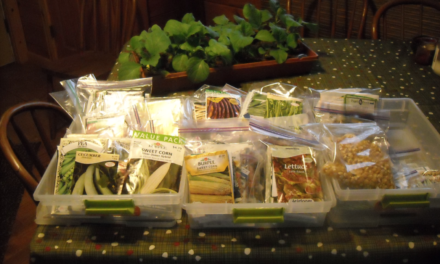Have you ever cooked a meal using nothing but foods you grew yourself? It really is one of my greatest pleasures when I can serve a meal that has been grown right here at 7 E’s Homestead.
A tool that makes me more efficient in processing fresh whole foods is my dehydrator. I use it every month of the year to preserve the harvest and take advantage of seasonal buys.
Properly drying food removes 80% of the water from veggies and 90% from fruit. Without adequate moisture the growth of bacteria, molds and yeasts are eliminated, and your dried foods are safe for 6 months to 2 years. Storing your treasures in a cool dry dark place will help them last longer.
While you can try to dry foods outside or in the oven, I think you will agree with me that a dehydrator is the best! Square or round they both will do the job as long as you follow a few guidelines.
• Use only blemish-free fruits and vegetables. Fruit should not be too ripe. Save overly ripe fruits for fruit leathers.

• Never overload the trays or overlap foods. There needs to be airflow around each piece. In this picture, some of the green onions are close together, but they will be fine as they reduce in size. The food you are processing should be uniform in shape and thickness. I have been drying organic spinach as well as green onions. I love drying spinach, as it is delicious in scrambled eggs in the middle of winter, it’s a great time saver. You can remove the veins from the spinach, but I am using this batch to process into spinach powder to use in smoothies and in homemade pasta.

• While many foods like spinach, kale, peppers, and onions do not need it, some foods will need to be blanched before going into the dehydrator. Why go through all that work? You need to stop the action of the enzymes that cause food spoilage. Steam blanching is the only recommended method of blanching for dehydrating because water blanching will add too much additional water and make it take much longer to dry the food.
• Check your trays for uneven drying and remove any pieces that are brittle. Place in a zip-lock bag for drying test. This is the best tip I can share with you as it has helped me not lose many trays of produce. Put a sample of your finished product in a zip-lock bag and seal. Wait 15 to 30 minutes and check the bag. If there are water droplets or any mist on the surface of the bag your produce is not completely dry and will spoil. Just place it back on a tray and process longer.

I have some great “out of the box” recipes like cantaloupe candy, eggplant jerky, kale chips, and dried yogurt that are incredibly delicious! Take time to enjoy the day!






